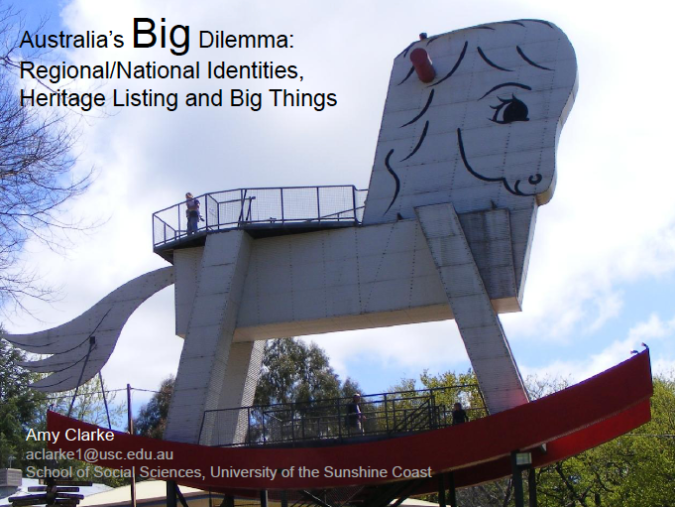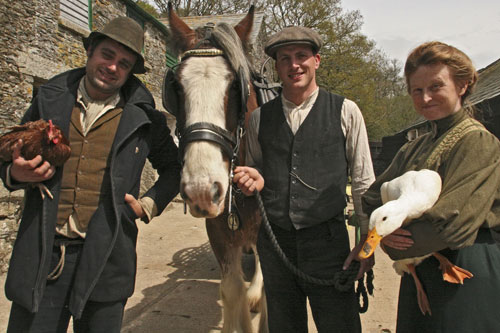We have devalued and derided the Bachelor of Arts (and related degrees) for too long. Here is a selection of sources that testifies to the social and economic value of Arts/Humanities degrees, and to the usefulness of these qualifications for individuals in the workforce:
Susan Forde, “If the Government Listened to Business Leaders, They Would Encourage Humanities Education, Not Pull Funds From It”, The Conversation, 22 June 2020.
“Chief Executive of the Business Council of Australia, Jennifer Westacott, said in a 2016 speech all 21st century successful leaders would need ‘some form of humanities perspective and education’.
‘I argue this because I believe our economic and technological success has not been matched with a constant orientation towards a better human condition.’
She said the humanities produce people who can ‘ask the right questions, think for themselves, explain what they think, and turn those ideas into actions’.”
“She went further to say the key skills required by industry and business were nested in the humanities: ‘critical thinking, synthesis, judgement and an understanding of ethical constructs’.
“Another valued industry body, Deloitte Access Economics, reported in 2018 that humanities and communications graduates delivered 30 technical skills hugely sought-after by employers. Their analysis was based on graduate outcomes and employer satisfaction surveys, coupled with wide-ranging consultations with global business, public sector agencies and researchers. They found 72% of employers ‘demanded’ communication skills when hiring, but only 27% of potential hires actually had those skills. They also found transferable skills, such as as teamwork, communication, problem-solving, innovation and emotional judgement, ‘have become widely acknowledged as important in driving business success’.”
Rebecca Urban, “There is Much More to Education Than Training,” The Australian, 21 June 2020.
“Campion College president Paul Morrissey said the reforms would inevitably send a message that a degree in the humanities was not worthwhile. ‘In fact, the humanities are intrinsically worthwhile; the study of history, philosophy, art, literature is a good thing,’ Dr Morrissey said. ‘The humanities are really at the heart of a university, the heart of culture. In order for a culture to survive and flourish, its citizenry needs an education in those subjects that have formed the institutions that have built the culture.’”
“Professor Haines said the importance of the humanities studies in cutting-edge and high-growth industries was often underestimated. ‘Even Steve Jobs once acknowledged that without the humanities, Apple would not exist,’ he said. ‘In a world where everything is becoming so automated, we need people who have those other skills — those creativity and critical-thinking skills. ‘We need people who can use language in a skilled and articulate manner, who can absorb complex texts and put ideas out there in creative and persuasive ways. ‘It’s a skill any business will tell you they need.’”
Cait Kelly, “Higher Fees for Humanities? Data Undercuts Argument Against Arts Degrees,” The New Daily, 21 June 2020.
“Arts graduates are getting higher-paying jobs and quicker entry to the workforce than some STEM subjects, research has revealed. In direct contradiction to the federal government’s justification for its announcement on Friday that it would raise the cost of humanities, data from the Quality Indicators for Learning and Teaching shows arts students are more likely to get jobs than maths and science graduates. Three years after finishing, humanities graduates are employed at a rate of 91.1 per cent, above both science and maths – which have a 90.1 per cent rate of overall employment, the data shows. And 95.8 per cent of law graduates on average gain employment.”
“Those coming out of our higher educational institutions with an arts degree also make more money. Humanities and social science graduates earn on average $70,300, while their maths and science peers get $68,900.”
Michelle Grattan,“View from the Hill: Tehan’s Student Fees Are Not Just About Jobs, But About Funding and a Dash of Ideology Too,” The Conversation, 21 June 2020.
“There is an anti-intellectual streak in this government, with ministers unsympathetic towards universities, which many of them see as breeding grounds for left-leaning activists. Education Minister Dan Tehan, for one, has been very critical of what he has identified as curbs on free speech in the universities. This government and its prime minister are a very long way from Liberal Party founder Robert Menzies’s views. Menzies saw as one of his major achievements the expansion of Australia’s universities, and he had a broad view of higher education.
David Furse-Roberts wrote in a Quadrant article titled, ‘A Rugged Honesty of Mind: Menzies and Education’: ‘Far from functioning merely as utilitarian “degree factories” to churn out the greatest volume of graduates, Menzies esteemed universities as the great nurseries of civilisation. In addition to equipping undergraduates with essential training and vocational skills, the university would serve to cultivate the character of students and encourage them to seek truth and beauty in their chosen discipline.’ Menzies strongly defended the humanities (although it has been noted the ‘humanities’ as taught in universities of his day looked rather different from much of today’s content). And, it should be added, universities then did not teach the wide range of vocational courses they do today.”
Joy Damousi,“Opinion – Why We Need Humanities Graduates In Our Workforce,” The Age, 21 June 2020.
“Business Council of Australia chief executive Jennifer Westacott has noted the importance of humanities in the need for a mixture of skills in the current and future workforce. Concerns raised by peak employer groups this week reflect the desirability of these skills across diverse industries now and for the future workforce.
Research undertaken by the Australian Academy of the Humanities indicates that the Australian public values humanities skills and capabilities. In a series of focus group discussions conducted shortly before COVID-19 took hold, a group of middle-income swing voters from suburban and country Australia strongly asserted they wanted people from both HASS and science, technology, engineering and mathematics in the workplace. Humanities-trained employees bring ‘balance and human perspectives’ to decision-making: ‘There are going to be more and more human-related challenges, so we will need human skills to overcome this’.”
Lisa Davies, Editorial – “The Agony and Ecstasy of a Degree in Humanities,” Sydney Morning Herald, 19 June 2020.
“The Academy of Social Sciences in Australia calculates that two in three chief executives of ASX200 listed companies have a degree in the humanities, as do 62 per cent of government senior executives and 66 per cent of federal parliamentarians.”
“The value of humanities is, however, not just about some fluffy concept of personal growth. In a modern economy where services dominate employment, humanities skills are needed in marketing, justice, management, health delivery, government and entertainment.”
Peter Hurley, “Humanities Graduates Earn More Than Those Who Study Science and Maths”, The Conversation, 19 June 2020.
“…humanities and social science graduates (A$70,300) earn more than maths and science graduates (A$68,900).”
Susan Svrluga, “Liberal Arts Education: Waste of Money or Practical Investment? Study’s Conclusions Might Surprise You,” Washington Post, 14 January 2020.
“A study from Georgetown University’s Center on Education and the Workforce finds that over the course of a career, a liberal arts education is remarkably practical, providing a median return on investment 40 years after enrollment that approaches $1 million. The results, searchable and sortable by institution, were released Tuesday.”
“What Degrees do Ministers in Australia Have, and Why it Matters”, Torrens.edu.au, 18 July 2019.
“Without a doubt, the three most popular degrees across both parties are:
1. Law
2. Arts
3. Economics”
Results in summary: 10 Labor Shadow Ministers and 11 Liberal Ministers have Law Degrees; 10 Labor Shadow Ministers and 9 Liberal Ministers have Arts Degrees; 3 Labor Shadow Ministers and 7 Liberal Ministers have Economics Degrees.
J. M. Olejarz, “Liberal Arts in the Data Age,” Harvard Business Review, July-August 2017.
“From Silicon Valley to the Pentagon, people are beginning to realize that to effectively tackle today’s biggest social and technological challenges, we need to think critically about their human context—something humanities graduates happen to be well trained to do.”
“If we want to prepare students to solve large-scale human problems, Hartley argues, we must push them to widen, not narrow, their education and interests. He ticks off a long list of successful tech leaders who hold degrees in the humanities. To mention just a few CEOs: Stewart Butterfield, Slack, philosophy; Jack Ma, Alibaba, English; Susan Wojcicki, YouTube, history and literature; Brian Chesky, Airbnb, fine arts. Of course, we need technical experts, Hartley says, but we also need people who grasp the whys and hows of human behaviour.”
Moreover –
The Australian Government’s Skills for the Future website admits that many of the necessary skills of current and future graduates are those that are best / easily obtained through an Arts/Humanities degree:
“What types of skills will be in demand in the near future?
There have been many different attempts to identify the skills which are likely to be in demand in the near future. The list below shows some of the skills most frequently identified by Australian companies in a recent survey conducted by the World Economic Forum. These skills are highly transferable, meaning they will be valued by many different employers across a range of industries and roles.
Emerging Skills:
Creativity, originality and initiative
Analytical thinking and innovation
Active learning
Technology design and programming
Complex problem-solving
Critical thinking and analysis
Leadership and social influence
Emotional intelligence
Reasoning
Resilience, stress tolerance and flexibility”
And the World Economic Forum’s Future of Jobs Report similarly observed:










